55 posts
Ink-tank - Ink Tank - Tumblr Blog


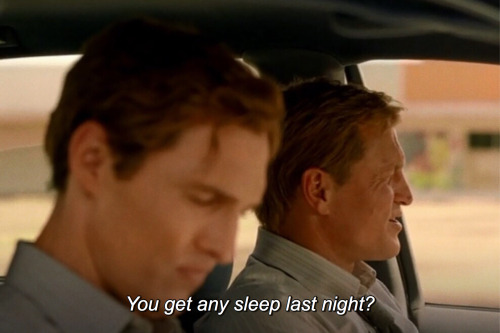
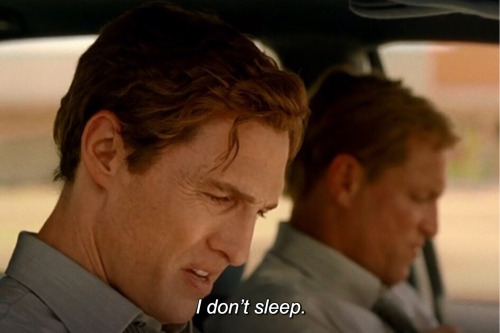
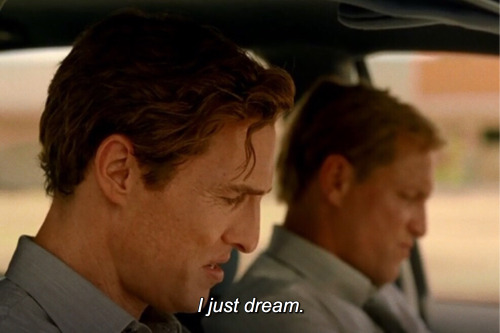
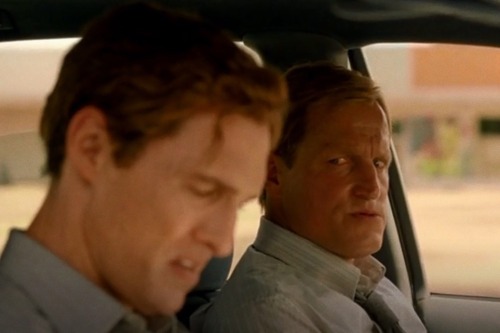
True Detective (2014)



SEINFELD (1989–1998) — 9.13 | the cartoon
things that made me stop wanting to die that require no effort whatsoever
change the color used to highlight text on your laptop
move the pictures on your wall
stack whatever clutter is in your room into piles even if you don’t have time to clean it all
slightly vary your commute, even just by one street
change where you sit and scroll aimlessly on your phone even if it’s only to the chair in your room instead of your bed
drink water or juice out of a wine glass in the morning because nothing is real
shower with the lights off, without music
buy $3 flowers at trader joe’s—they look bad next to the more expensive ones but they look so good in your room
start typing things you don’t post into your notes. your thoughts can be worth documenting even if you don’t deem them worth sharing
wake up super early just once. you don’t have to make it a habit it’s just extra satisfying to go to bed that night
listen to the entirety of your favorite album from 2015
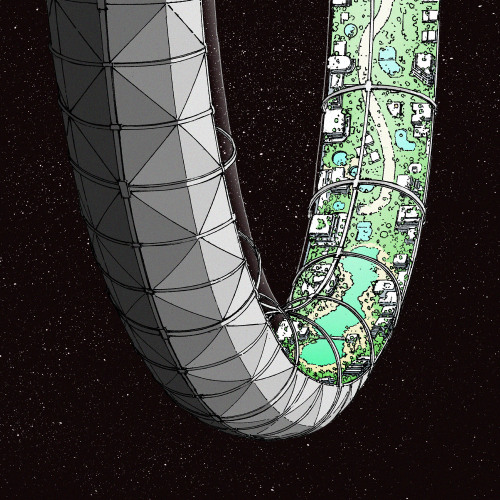
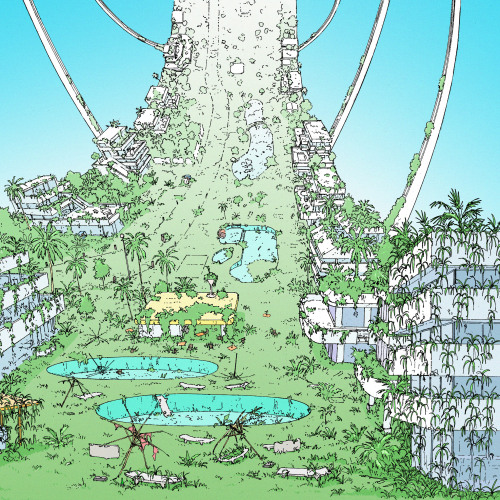
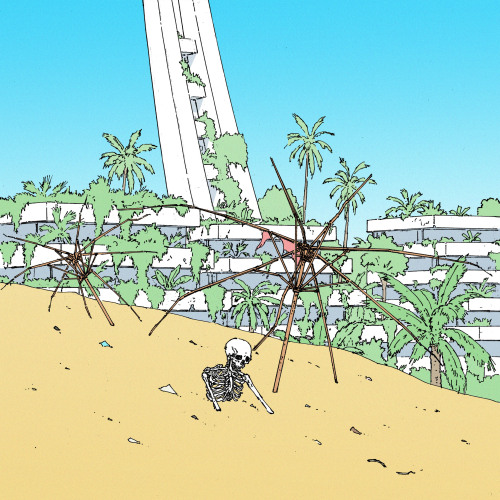


People, especially games, get eldritch madness wrong a lot and it’s really such a shame.
An ant doesn’t start babbling when they see a circuit board. They find it strange, to them it is a landscape of strange angles and humming monoliths. They may be scared, but that is not madness.
Madness comes when the ant, for a moment, can see as a human does.
It understands those markings are words, symbols with meaning, like a pheromone but infinitely more complex. It can travel unimaginable distances, to lands unlike anything it has seen before. It knows of mirth, embarrassment, love, concepts unimaginable before this moment, and then…
It’s an ant again.
Echoes of things it cannot comprehend swirl around its mind. It cannot make use of this knowledge, but it still remembers. How is it supposed to return to its life? The more the ant saw the harder it is for it to forget. It needs to see it again, understand again. It will do anything to show others, to show itself, nothing else in this tiny world matters.
This is madness.

“If you are neutral in situations of injustice, you have chosen the side of the oppressor.”
A visit to San Sibilia
Extract from the journal of Woolwich Lyons, cartographer of the International Peace Conference, March 1919.
3 March, 1919
In order to ensure that war never again despoils the continent of Europe or its diverse colonies, it has been agreed that the borders between all nation-states be fixed upon natural and objectively-established boundaries. While some are easy to establish with the stroke of a pen - the Rhine, the English Channel, the Danube - it is equally important to rationally demarcate the more difficult territories.
For that reason, as an official cartographer of the Peace Conference, I was despatched with a team of mountaineers and surveyors to delineate the border between France and Spain through the Pyrenees. For disputes over mineral rights and pasturage could be the spark that ignites some future war.
Unbelievably, the expedition has stumbled across a whole city not on my maps of the region - and not some forgotten and insular barony, but a thriving industrial town. Cresting the top of a deep valley revealed below long boulevards with civic and religious architecture as grand as that of Leopold’s Bruxelles, with a network of trams and funiculars delivering people to and from well-appointed and leafy suburbs, and electric street-lamps that shone in the gathering dusk. The road down was dusty and clearly rarely-trod, but an antique sign bore a name I did not recognise: San Sibilia.
The question of which side of the border this incredible city would fall struck me as immediately as the key question of our expedition - more important even than allocating the ruins of Andorra or the Quinto Real.
Finding accommodation for the night quickly became a political problem. The first hotel on the boulevard flew a French tricolor and seemed to serve only French cuisine created by a French chef. The second hotel flew the red and gold standard of Spain, and had signage only in the Spanish language. And the third flew the flag of the Basque people - even worse from the perspective of an official conference delegation.
As we wandered to and fro around the boulevards and avenues, our mixed group speaking English, French, and German attracted enough attention that the mayor of the town, accompanied by a squad of uniformed gendarmes, came out to meet us. Monsieur-Signor Gascon, the mayor, listened rather gravely as we explained our role and presented our credentials, and invited us to stay in his official residence - a very grand annex to the town’s domed, baroque city hall.
7 March, 1919
The work continues apace, with the surveyors out inspecting the geology of each side of the valley, and charting the routes of the various streams that flow into the valley to become the narrow, fast-flowing river that runs through the town.
But yesterday morning, Monsieur-Signor Gascon sadly informed us that our presence in the city has become a problem, disturbing the delicate peace between the diverse communities that he has long sought to keep. The population in recent days has started to understand that a border is being drawn, and they will soon find themselves on one or the other side of it.
In the Rhineland or the Low Countries, this might have come to violence. In the Balkans, it certainly would. But the first outbreak of contention in San Sibilia was that two art galleries on either side of the city hall held rival exhibitions of local art - one in the French style and one in the Spanish, with our whole expedition receiving gilt-edged invitations to both.
Believing it would be rude not to attend, I set out to attend both. The first, which opened around tea-time, featured pictures by Mme Melode Bassot of the surrounding landscapes and countryside in an impressionist style reminiscent of Calude Monet. As soon as I arrived, a flute of champagne was placed in my hand, and a string quartet played as the artist accompanied me through the exhibition. Even though I gave the art the highest compliments I could muster, Mme Bassot still seemed offended when I gave my apologies and headed across the street.
The exhibition by Sr Elias Monte was a more lively affair. As well as portraits and patriotic scenes painted in a style reminiscent of Francisco Goya, the guitar music, dancing, and prodigious quantities of summer wine and punch persuaded me to stay until well after midnight.
This morning, Monsieur-Signor Gascon was quite furious with me. By attending the exhibitions, he claimed that I had inflamed the intolerable and dangerous tensions within his city, and ordered the expedition to leave the city at once. Though very hung over, I tried explaining that we could not leave until our survey was complete, but he had the gendarmes remove us from the official residence, and deposited all of our luggage and equipment on the cobbles outside.
10 March, 1919
I had a nightmare last night.
Though I had been used to sleeping under canvas during the expedition, after almost a week in the residence on a comfortable feather-mattress bed and surrounded by sweet beeswax candles, it was most uncomfortable on a windy verge on a road halfway up the valley. My dreaming mind must have recalled sleeping in a bivouac at the bottom of a trench in the French Rhineland.
In my dream, the whirr and sputter of distant biplanes and the rattle of guns was interrupted by a bugle – an order to ‘go over the top’.
With my regiment, I clambered over the the lip of the trench, and found myself in a San Sibilia boulevard, lined with coils of razor-wire and overturned trams. When a machine-gun post in the flower gardens of city hall opened fire, I woke up in a cold sweat. Perhaps I even screamed.
11 March, 1919
After such an uncomfortable night, I took the decision that we must find a discrete lodging somewhere in the city. One of the stewards located boarding house on the edge of the city, a modest, slightly-ramshackle building in a vaguely alpine style, run by a stout middle-aged woman called Mme Estensoro.
However, as the party would occupy all of her available rooms, she demanded payment in advance. She refused to accept both francs and pesetas, insisting she would only accept the city’s only peculiar local currency, the gold morabeti.
I rifled through my wallet as I unsuccessfully proffered lira, pounds, dollars, and marks – when a letter on brittle, brown paper fluttered down to the countertop.
She snatched the letter up immediately before I could stop her. It was the final letter sent to me by Sgt Lussier before his division was ordered ‘over the top’ at Strasbourg. This was the letter in which, understanding what was about to happen, he abandoned euphemism and declared his love.
I assumed that Mme Esensoro would put us back on the street, but she folded and handed back the letter, and finally accepted payment in pesetas.
12 March, 1919
To research the historical maps of the city, I visited the public library – a grand building in a style combining the baroque, the gothic, and the grutesco styles, with an interior of painted tiles and rough-hewn stone columns.
Taking a seat in a comfortable reading nook, I reviewed maps of the city that charted its development from a Roman mining settlement, a Visigothic barony, and various arcs of ruin and expansion through the medieval period, with Andalusian, Carthaginian and Occitan conquest at various periods. Even the dates given on these maps did not correspond with my understanding of history, suggesting that they represented a local mythology rather than a true record.
My eye was distracted by a procession of green lanterns moving past the library window. All along the street outside, people in tall pointed hoods marched, accompanied by a deep bass drum and shrill flutes, carrying lanterns with green-coloured glass. It reminded me of images I have seen of holy week in Seville and Cordova, yet Easter was still weeks away wasn’t it? And the float that formed the centrepiece of the procession showed Christ as I had never seen him – a crown of fresh blossoms not thorns, and a living tree rather than a crucifix. The effigy’s skin was like old bark, and its beard woven from fresh vines.
13 March, 1919
Last night’s festivities continued today, as the population streamed towards the theatre. I joined the throng moving towards this baroque, domed, circular building on the main boulevard. Within this crowd there was no enmity between different nationalities, with everyone mixing and mingling. The interior of the theatre was not as I had expected, with the walls built around what seemed to be an ancient Roman coliseum, lit by sunlight through a domed ceiling of stained glass. The polyglot crowd sat on the tiered stone steps.
The show itself was a form of pantomime or passion-play, acting out scenes featuring the Green Christ. I could not understand the story of the theology on display, and the language was discordantly Germanic – perhaps an ancient Visigothic tongue? The crowd was enraptured.
14 March, 1919
Intrigued by this strange religious festival and by the unlikely history demonstrated by the library’s map collection, I snuck into the small archeological museum housed in an annex of the city hall.
The first room was full of Roman antiquities, mostly statues in various states of completeness. The city must have had two dominant religions during this classical period – the Mithraic mystery cult, with its hero-god depicted as a handsome young soldier, and the worship of the Great God Faunus, shown in his most feral and animalistic aspects.
While I inspected a display cases of detached Faunus phalluses in marble and gold, Monsieur-Signor Gascon cornered me, angrily asserting that he had seen my “sneaking” in here “like a damned thief” after my official exile. He took me by the elbow and dragged me off the civic property, making threats that he would call the gendarmes if he saw me here again.
17 March, 1919
The survey is complete. Among our group, we have decided that San Sibilia must fall on the Spanish side of the border, for reasons purely geographical and by reason of the position of the main watercourse through the valley.
As fascinating as this odd city is, I was glad to be on our way – there is more work to do further along the border. While the surveyors packed up their equipment and loaded the mules, I headed to the market to fetch provisions for the next leg of our journey.
While I rode the tram to the market, the skies grew black with dark clouds, and rain and hail started battering the windows. It was so severe that by the time I arrived at the market, the costermongers and stall-holders were almost all gone.
I returned with the few fresh herbs and root vegetables I could find, but the stewards said that the passes out of the valley would be uncrossable or too dangerous in this weather. We are stuck here for the meantime.
20 March, 1919
The rain continues to pour, with the streams and rivers full to the brim and flowing like torrents.
Very early this morning, Gustave Gilbert, a senior surveyor in the expedition, woke me with some furtive knocking on my bedroom door. He insisted in hushed tones that I should don my oilcloth and accompany him on a walk before breakfast.
Somewhat perplexed, I agreed, and he walked me along the paved banks of the river, right up to the edge of town. We did not speak at all en route, but eventually we reached the thing he wanted to show me – an antique floodgate by a lake or reservoir fed by numerous streams.
Gustave explained that at some very antique period, the true course of the river had been diverted from its proper and natural course. This original channel was now reduced to little more than an irrigation ditch – but by sabotaging this floodgate, the river’s course could be restored.
This would also change the conclusions of our survey, placing the city into French rather than Spanish territory.
Gustave and I had both been enemies of Spain during the war. He argued that it was wrong that they should be rewarded for their belligerence with the gold mines and fertile valley of San Sibilia, and that we could change that only by opening this floodgate.
Together, we started to raise the floodgate, and almost as soon as the water began to surge below the gate, the swollen torrent burst through, destroying the gate as it swept through the city on its new – or, rather, proper – course.
21 March, 1919
The weather has finally cleared, and we are due to depart, with our conclusions reversed. But while we enjoyed a coffee on the terrace of our pension, Monsieur-Signor Gascon approached. Visibly upset, he informed us that a flood had burst the old irrigation channels, washing away fields of crops and some farmers houses, ruining the tannery district, and even causing subsidence that will ultimately destroy the art school.
He begged us to send word to nearby towns of any political colour to send food and aid.
I found it difficult to look him in the eye, consumed by guilt for what I had done. We agreed that while the stewards would take his appeal to the nearest towns, I would stay in San Sibilia and do what I can to help the rescue and rebuilding efforts.
22 March, 1919
Today, we found a waterlogged corpse in the flooded cellar of a farmhouse. A woman had been trapped beneath her own home as the waters rose.
It was a mistake for me to join the rescue party. As soon as the body was found, in their grief the local men and women turned on me for bringing bad fortune and curses from outside the city. To defuse the situation I fled, leaving them to their grief and anger.
25 March, 1919
The mayor of San Sibilia has been deposed. An isolationist tendency based on the parochial church council from the Cathedral of the Green Christ has seized control of the city. The anger at outsiders by the mourners at the funeral of the drowned woman was the catalyst for this political turmoil.
I have been placed under house arrest by Gendarmes, now in blue hoods rather than their civil uniforms, but undoubtedly the same men and women. The landlady Mme Estensoro was quite embarrassed by the behaviour of the police.
I was informed that I would be taken before an inquisitorial court, and provided with an advocate. He is a meek notary public who admitted that he did not understand the city’s new laws, but that the charges are of bringing ill luck, entering the city without permission, and angering the Christ of the Rains. He said that the punishments will be an arbitrary decision of the presiding inquisitor, but that penance and exile are the most likely penalties.
Fortunately, they have no evidence connecting me to the bursting of the floodgate. If they knew that, what would my punishment be then? Certainly exile would not suffice. Would they revive some Visigothic or Roman torture for me specifically?
Oh, but the inquisitor just arrived unexpectedly at my window. Through the eyeholes of his green hood, he saw me scribbling in this journal. If he takes it, then I am sure to be convicted! He raps on the door, shouting to demand entry!
https://jimmyshelter.itch.io/a-visit-to-san-sibilia

F*g is a slur and no amount of quirky posts is gonna make you cool for using it
You have rights because faggots and dykes fought for them. Respect that you cunt

Orville Peck

Fascism sells a synthetic nostalgia.

I love memetic communication when it gets to the point of being incomprehensible because can you imagine showing someone this picture

And asking them what Greek god it represents


the english language is truly a wonder
You've heard of "humans being severely injured to reveal mechanical insides" now get ready for a far more horrifying alternative: machines and technology being damaged to reveal meaty, bloody insides
The Prospero Praxis
All eyes are on me as I hit the catwalk. That's not an exaggeration; it's a fact, as recorded by the optical implants of everyone in the nightclub, and displayed in graphical format in my peripheral vision.
The music's a steady 126bpm. My form-hugging minidress pulses from steel-grey to burnished gold, more vivid with every electronic beat. I'm half way down the runway when the chorus starts and the synthsoprano soars to a note that no unenhanced Earthling could ever achieve. My dress unfolds like impossible origami into a floor-length gown, horizontal bands of every colour spiralling upward from the hem to the halterneck.
Category is: wired straight into your optic nerve. Digitally-enhanced extravaganza. Final round of judging. Head to head.
On the parallel runway is Shader Lovelace. Her name's a carcrash of puns that probably doesn't mean much to the crowd of mostly young, mostly gay, mostly basic Earthlings and Uranians. She's wearing a silver kimono. Pretty simple, but the fabric moves uncannily, like she's submerged in water or dancing in zero-gravity. It's a nice little effect, and the pie chart in my heads-up display registers that she's stealing the attention of the audience. The eyes of the people filling the space between us are turning towards her. Away from me.
But when I reach the end of the runway my transformation is complete, and I'm a living pride flag. One thing I've learned from walking in countless competitions like this: stick a rainbow on it, and they eat it up. Pandering, moi?
I glance down, expecting to see two thumbs-up in front of a darling bowtie and a corporate-slick haircut, but Felix isn't where he promised to be. He's not at the bar either, making sure that there's a bottle of something fizzy ready to celebrate my win. He's not even in the section cordoned off for the digital phantoms of sick and housebound people who couldn't make it to the club in person.
The beat drops and the brassy bass roars, but I'm searching the room and miss the moment.
Shader Lovelace doesn't. She dips right on cue. Leaps high and lands flat on her back. Her kimono shatters like glass. She's on the ground, writhing erotically in her underwear. Shards of pseudo-mirror bounce up then hang in the air like someone pressed pause.
No, not pseudo-mirror: a realtime mirror effect. I catch a glimpse of my own astonished face reflected back across the room. The amount of processing power it must be taking is nothing short of opulent.
She hits a perfect one-hundred percent on the graph.
I activate my own showstopper moment, reaching out my arms and spinning on the spot. The rainbow bands unfurl like tentacles, which pixelate at their extremities and become beams of concentrated prismatic light. But I've blown the spot. I'm too late, and off the beat, and the graph doesn't lie when it says that nobody's watching.
Her mirrors twinkle in my reflected rainbow lights.
She kips up onto stiletto heels, which isn't even a digital effect. The bass thunders as the song reaches its climax. My rainbow weaves and plaits itself into my pouf, but I know when I'm defeated. I'm supposed to be the best digital couturier in the House of Aphrodite, and I'm being laced at our own pageant in our own nightclub. It wasn't meant to go like this.
The music stops. The club echoes with applause, but it feels like it's all directed at Shader.
Mother, sitting at the centre of the row of judges at the back of the stage, holds up her hand. The crowd falls obediently silent. She's Venus Aphrodite, mother of the House of Aphrodite, and in this club she is the undisputed monocrat in a fuchsia gown and ruff collar. She shoots me a benign, disappointed glance, but it's entirely too much like a look my actual mother might give, and I instinctively lower my eyes. Under the oppressive heat of the spotlights, a bead of sweat works its way from my wigline down my forehead.
“Shader Lovelace of the House of Hack,” says Mother, “as the visiting queen you are judged first. Your kimono shattered just like the mirror I made the mistake of glancing in before putting on my makeup this morning. That's seven years of bad luck for me, but for you it only brought good fortune. You get a ten.”
One of the other judges follows suit, and Shader pantomimes being all humble and surprised. The third judge awards her an eight-point-five, and Shader gives a cute little shrug, like what are you gonna do? It's not much, but that 8.5 is a narrow window. If I could score a couple of perfect tens, I could still be in the game. It's a faint sparkle of hope.
“Hero of the House of Aphrodite,” Mother continues. “Your rainbow display made us all feel proud, but, even though you're a friend of Dorothy, the dreams that you dream of aren't coming true tonight. Seven point five.”
The point-five's a charity half.
I don't wait for the other judges to lay down their scores. I burn off the gown in a shower of embers, leaving behind only the charcoal-grey cocktail dress that was under the effects, and hop down from the far end of the runway. As I leave through the front door, so many people suck air through their teeth at once that it sounds like an airlock cycling.
Sure, everyone will think I'm a diva, but being a gracious loser is the quickest way to becoming some jobbing nobody, or, gods forbid, what's euphemistically called the enhancement talent. Honestly, I'm better off a bitch.
(The Prospero Praxis)

scrolling twitter today and then coming over here is like walking out of a burning building and then walking into the calm remains of a building that burnt down 5 years ago and has been reclaimed by nature.

The interminable, torrid summer of 1925. Your vacation in the South of France seems to be stretching into eternity, an endless repetition of breakfast buffets, cocktails, and sitting in the sizzling sand while the ocean pointlessly sloshes itself about. The hotel is indecently luxurious. You are extremely rich, but bored out of your skull and unbearably hot. The other rich, bored residents of this hotel have started to develop a wicked look in their eyes. Perhaps they have guessed that you have been lying to conceal your scandalous past. Your only choice is to expose their own shocking secrets and ruin them socially before they have the chance to take you down.
The Beautiful and Damned: a tabletop roleplaying game where you play the kind of character you might find in an F. Scott Fitzgerald story: a Jay Gatsby, Daisy Buchanan, Dick Diver, Myrtle Wilson, or Anthony Patch.
https://robotfrancis.itch.io/the-beautiful-and-damned









Favorite abandoned photographer feature
Check out emptyspaces.uk








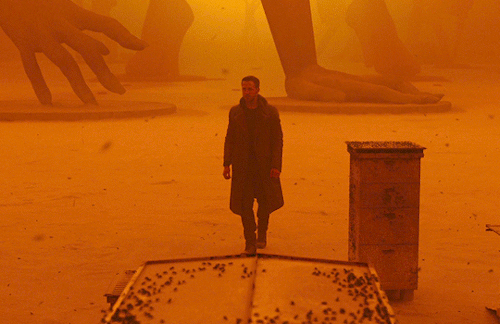

The yellowish hue of the desert was directly inspired by a sandstorm that hit Sydney, Australia in 2009. It became the visual reference in setting the tone and mood for the desert scenes. “Yellow is very important in the movie,” explains Denis Villeneuve. “It’s a color I associate with childhood imagination and with madness. In this case, it’s linked to K’s desire to be human. Throughout his journey, he follows a trail of yellow clues, leading him to this yellow world.”
— The Art and Soul of Blade Runner 2049, written by Tanya Lapointe
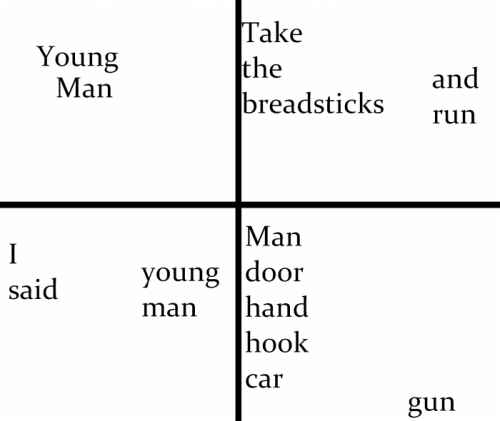
memeception
The slowed-down Chipmunks are both brilliant and terrifying
By now, we’re all pretty used to people speeding up vocal samples to make them sound like Alvin And The Chipmunks. It’s how Kanye West launched his career. But what happens when you slow down Alvin And The Chipmunks so much that the vocals sound like they were sung by a regular human? As it turns out, you get an amazing collision of pop vocals and sludge-filled doom metal instrumentals.
Toronto-based electronic musician Brian Borcherdt, best known for his work with Holy Fuck, is the mind behind chipmunkson16speed, which is the result of finding both a bunch of old Chipmunks records and a suitcase record player with 16 RPM setting.
More at avclub.com